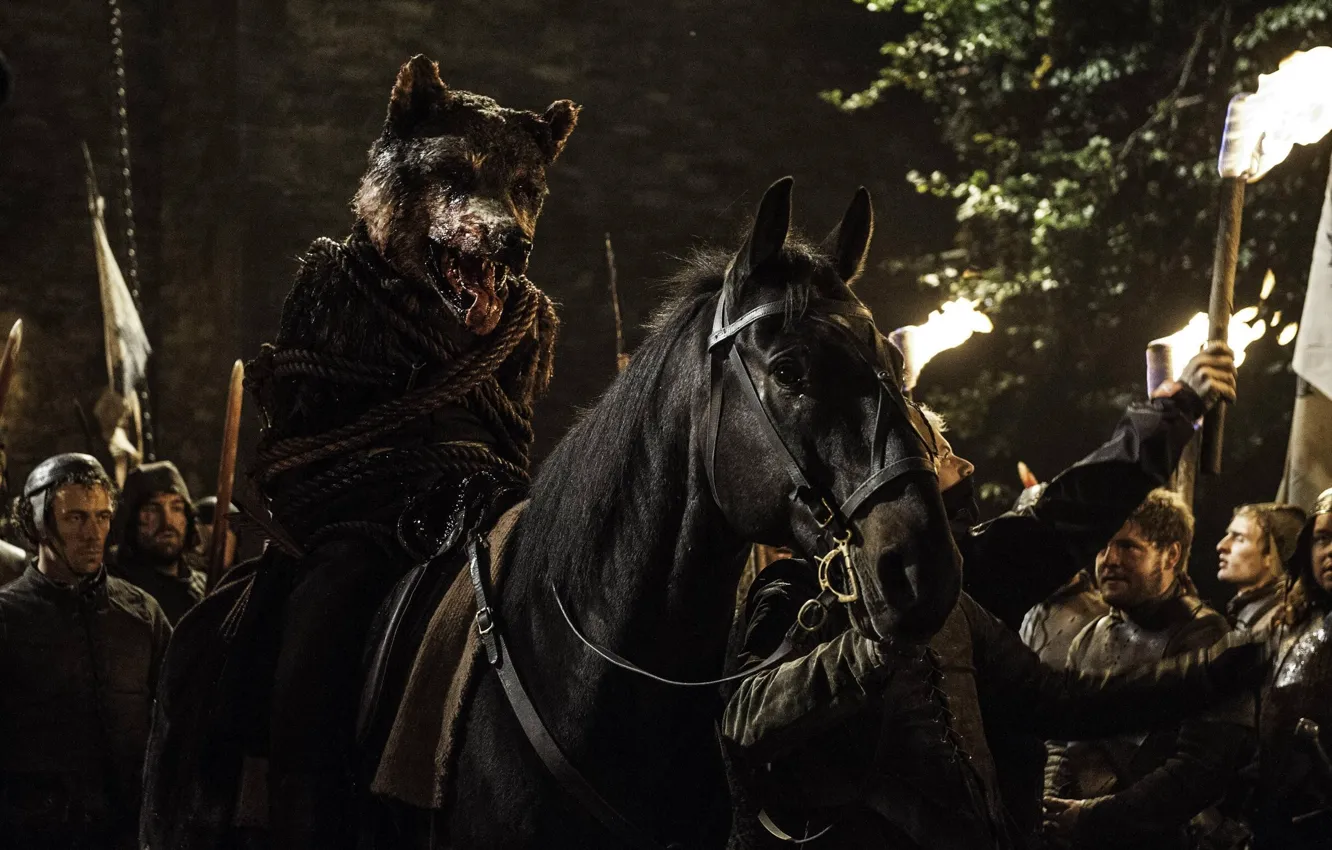The final season of Game of Thrones continues to prove divisive almost four months after its finale. While some felt that Season Eight served as a worthy conclusion to the incredibly popular show, others were left disappointed and even angry. Take a gander online and you won’t have to dig deep to find a great deal of ire not only from professional critics, but also anonymous meme-ers, amateur writers, and perhaps even your distant acquaintances on Facebook. In the age of social media, every overly-invested Game of Thrones fan with an opinion has a public place to passionately air their complaints. But what is the most effective way to complain?
It turns out that it’s surprisingly difficult to write an accessible and thoughtful critique of GOT. While they are certainly out there, well-argued and moderate cases for how the show went wrong are hard to find. However, there is a veritable wealth of tirades to be found. Quite a few of them are irate to the point of manic, muddled incomprehensibility. Other diatribes, while more lucid, are so specific and long-winded in their grievances that their authors run the risk of having their arguments discarded as the ramblings of ornery quibblers.
Amateur internet rants are self-indulgent, albeit cathartic for those who are heavily invested in the HBO show; ultimately they are more for the benefit of the author than any readers that might stumble across them. At the same time, rants are simpler to write than cogent critiques of the infamously complex and long-running Thrones. It can quickly become daunting to attempt to articulate one’s criticism of the writing or production of the show, especially when one is not a professional television critic. As amateur audience members such as myself struggle to justify their disappointment with Season Eight, visual motifs have played an important role in quickly communicating larger ideas to a diverse audience.

Image credit: Reddit user Kikwajuni26
When a disposable coffee cup and then a plastic water bottle found their way unscathed into the final season of the medieval-era fantasy show, they were quickly re-appropriated by audiences as manifestations of much larger frustrations. To some, these visual gaffes represented the hasty way in which the show’s final season seemed to have been assembled. If the tables of the Starks’ feasting hall now featured Starbucks beverages and water-bottles lurked beneath ornate Westerosi chairs, the scripts of the show were riddled with modern anachronisms, muddled names, and absent discussions of life-changing events. In what seemed to be a case of careless writing, characters forgot about major plot points and then forgot themselves entirely. After eagle-eyed audiences caught the mistake, HBO digitally scrubbed the Westerosi Starbucks cup from existence (although not from memory). However, it continued to serve as an easy shorthand for expressing sentiments of unprofessionalism in regards to the show’s production. To displeased fans, the coffee cup fiasco epitomized their feelings of being more invested in GOT’s realization than show-runners David Benioff and D.B. Weiss.

Image credit: Reddit user Tattered
The misplaced cup and bottle helped to fuel the fires of audience discontent later in the season. However, the first sign of uneasiness took the shape of Jon Snow’s canine sidekick, Ghost, or rather, his marked absence. Fans of the stoic, yet soft-hearted Jon Snow were first impressed by his kindness in Season One when he rescued an abandoned, dying wolf pup from a snowbank. Years later, Jon and the wolf had grown together, shared triumph and tragedy together—all as the audience watched. So, when Jon Snow returned from a long trip at the beginning of Season Eight, fans were confused why the previously empathetic and loyal character didn’t seek out a warm reunion with his pet.

Image credit: Reddit user Fifthstarkalive
A public outcry delineated by sad puppy eyes began among passionate viewers. Apparently, audiences wanted to see Jon pet Ghost more than they wanted to see him learn about his true identity or flirt with Daenerys. By the time Ghost actually did show up, it was too late. The alleged emotional neglect of a fantasy wolf came to represent larger feelings of indignation over the lack of attention to characterization in Season Eight. It became evident that small moments like petting a direwolf did more to humanize and characterize Jon for audiences than seeing him participate in an epic battle. It wasn’t so much that audiences loved Ghost himself. Rather, they loved the way that Ghost’s interactions with Jon illuminated aspects of the latter’s character.
Without these moments, a character that once felt real to audiences suddenly became little more than a place-holder in a cinematic game of Risk. When Jon seemingly gave away his direwolf for good, some fans expressed a greater sense of loss at his inexplicably uncharacteristic behavior than when the man had actually died.
Throughout its eight seasons, Game of Thrones’ stakes were always founded in the threat of soullessness. One’s body could be ravaged and repurposed by White Walkers, one’s heart could be poisoned by evil and greed. Even if one remained pure of intention and deed, in Westeros, evil-doers often threatened to overpower the good, leaving “not a soul to hear” in their wake. If the fear of soullessness is a constant—and often inescapable– threat in Game of Thrones, it is often represented through animal symbolism.
While animal analogy is often dismissed as a childish means of communication, its rich role in Westerosi society is a testament to its effectiveness. Not only do animals and their representations help disparate characters come to understandings in the show, but they also aid the audience’s comprehension of fantastical cultures by bridging the divide between the fictional Westeros and the real world.
In Season Four, Cersei Lannister invokes animal metaphor to express her human fear for her young son as he is caught in the midst of an ugly power-struggle: “Margaery will dig her claws in, you will dig your claws in, and you’ll fight over him like beasts until you rip him apart.” Cersei’s concern for her child’s vulnerability in a time of human upheaval is well-founded. Her use of a violent animal simile aptly conveys her emotions. At the same time, Cersei fails to acknowledge that while animals may fight among themselves over matters that ultimately amount to survival, it is a purely human characteristic to murder children in the name of thrones and crowns.

Framed by his impressive kraken fireplace, Balon Greyjoy accuses his son of having spent too much time among “wolves.”
Likewise, in Season Two, Theon Greyjoy uses similarly charged language when speaking to his neglectful father. After Balon refuses to acknowledge the role that he played in Theon’s upbringing, the prince exclaims “You gave me away like some dog you didn’t want anymore. And now you curse me because I’ve come home!” Like Cersei, in a moment of intensely human emotion, Theon attempts to make his father understand his pain through the narrative simplification that the animal world offers. While Theon’s admonitions fall on deaf ears, the prince’s choice of words reaffirms the staying power of Ghost’s rallying cry. A cup is at best a neutral object, difficult to personify or successfully infuse with larger meaning in the long-term. A sad puppy is another matter entirely.

image credit: LE TRÔNE DE FER at redbubble.com
Many noble families in Westeros are proud to emblazon animalistic sigils on their banners if they inspire awe or fear. Cersei’s family is represented by a lion; Theon’s family boasts a kraken.In Westeros, the animal world—both supernatural and mundane—serves as a simple way of communicating complex ideas about power. While noble houses rarely share common values or priorities, their shared ecological experience allows them to find a common ground of communication.
For example, Olenna Tyrell uses the beastly sigils of various noble Westerosi houses in order to prove her a very real point about her own house’s resilience, despite the fact that she is discussing human hostilities, rather than warring plants and animals. She says: “Those are houses you watch out for–Direwolves and krakens, fierce beasts. But a golden rose growing strong, that strikes fear in the heart.”
Similarly, in a bid at demoralizing Theon Greyjoy, the repulsive Ramsay Bolton rambles: “Kraken…Strong, as long as they’re in the sea. When you take them out of the water, no bones. They collapse under their proud weight and slump into a heap of nothing. You’d think they’d know that. Unfortunately, they’re not very bright.” Through their seemingly oblique references to animal symbolism, both characters effectively and quickly communicate their views about human factions and power dynamics.

In “Game of Thrones” Season Three, Episode Ten, the Boltons and Freys disrespect Robb Stark’s corpse, after violently murdering him, his wife, and his mother.
Despite characters’ outward comfort with human-to-animal comparison, the fear of dehumanization, animalization, and therefore soullessness is ever-present in Westeros. The vile members of the uncomplicatedly evil House Bolton use this to their advantage. The Boltons play a part in murdering the noble Robb Stark and grotesquely mutilating his body and that of his direwolf. When they invade Robb’s home and subjugate his people, they vandalize the stone wolves of the castle as well, showing a complete disregard for Northern cultural values. They castrate Robb’s best friend and imprison him amongst man-eating dogs. They force Brienne of Tarth to fight a bear. By animalizing humans and tapping into deep-seated fears of soullessness in Westeros, the Boltons successfully assert their authority. At the same time, House Bolton’s sigil of a flayed man is notably founded in human rather than animal iconography. The Boltons’ sigil is not a poetic bid at primal power hierarchies like the sigils of the Lannisters or the Greyjoys. It is merely a threat from one human to another. While the Westerosi fear the supposed soullessness of animals, the sophisticated acts of intentional evil that they perform in their quests for power and revenge rival the uninformed violence of animals—even grieving dragons.

In “Game of Thrones” Season Seven, Episode Four, Daenerys Targaryen’s devastation of Lannister forces is represented by frenzied horses.
Often, in Game of Thrones, the suffering of innocent animals illustrates the increasing corruption of human society. A dead direwolf mother is found impaled with an antler, foreshadowing future conflicts between the Starks (whose heraldic sigil is that of a wolf) and the Baratheons (whose sigil is a stag). Later, the death of Sansa Stark’s direwolf pup, Lady, illustrates her father’s inability to protect her from the cruel realities of the world. When Daenerys’ dragon, Viserion, fell screaming to his death at the hands of the Night King, viewers began to question the wisdom of the queen’s endless lust for power.
Such moments are memorable, but so too are more mundane ones. A flaming, panicky horse marked the sabotage of Stannis Baratheon’s army and ultimately his undoing. More flaming, flailing horses, unable to escape the gold harnessed to their backs similarly denoted Daenery’s first fiery encounter with the Lannisters. In a grotesquely violent show, these images of animal suffering stand out. For the same reason that the image of a roaring lion or three-headed dragon will always inspire and intimidate, terrified, dying war-horses will always mark moments of irrevocable human ugliness and despair. Audiences see something that was once beautiful, meaningful, and soulful destroyed in the name of human ineptitude or greed.
Game of Thrones’ show-runners have excused the increasingly limited screen-time that was allotted for the Stark direwolves with explanations of technical limitations. Instead, viewers of Season Eight were treated to other marvels—sprawling CGI castles and artificial armies. Such sights were pretty, but they failed to potently inform or reaffirm the personalities or priorities of characters.
Audiences gained little insight into Jon Snow from the newly expanded views of his childhood home, Winterfell, in Season Eight. Was he still the man he was before he died and was resurrected? Before fell in love with his aunt? Before he found himself forced to murder her? To the end of the season, answers remained as fleeting and insubstantial as Ghost the direwolf.
